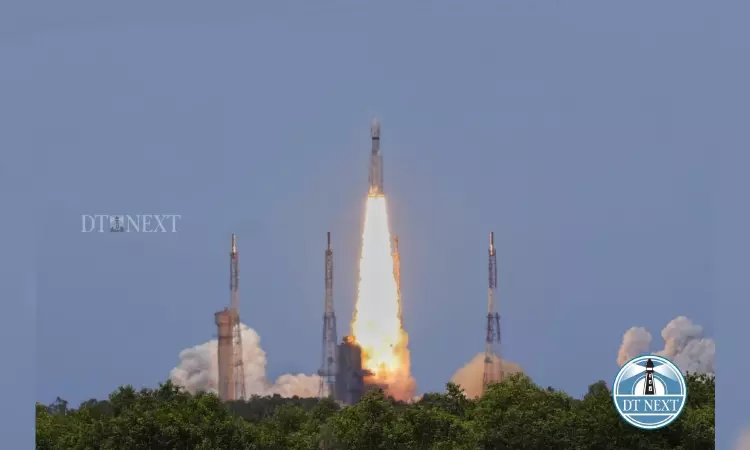Chandrayaan-1 sheds new light on water on Moon
Solar wind, which is composed of high energy particles such as protons, bombards the lunar surface and is thought to be one of the primary ways in which water is formed on the Moon.

Representative Image
NEW DELHI: Scientists analysing the remote sensing data from India’s Chandrayaan-1 lunar mission have found that high energy electrons from the Earth may be forming water on the Moon.
The team led by researchers from the University of Hawai’i (UH) at Manoa in the US discovered that these electrons in Earth’s plasma sheet are contributing to weathering processes -- breaking down or dissolving of rocks and minerals -- on the Moon’s surface.
The research, published in the journal Nature Astronomy, found that the electrons may have aided the formation of water on the lunar body.Knowing the concentrations and distributions of water on the Moon is critical to understanding its formation and evolution, and to providing water resources for future human exploration, the researchers said.
The new finding may help explain the origin of the water ice previously discovered in the permanently shaded regions of the Moon, they said.
Chandrayaan-1 played a crucial role in the discovery of water molecules on the Moon. The mission, launched in 2008, was the first Indian lunar probe under the Chandrayaan programme.
Solar wind, which is composed of high energy particles such as protons, bombards the lunar surface and is thought to be one of the primary ways in which water is formed on the Moon.
The team investigated the changes in surface weathering as the Moon passes through Earth’s magnetotail, an area that almost completely shields the lunar body from solar wind but not the Sun’s light photons.“This provides a natural laboratory for studying the formation processes of lunar surface water,” said Shuai Li, an assistant researcher at the UH Manoa School of Ocean.
“When the Moon is outside of the magnetotail, the lunar surface is bombarded with solar wind. Inside the magnetotail, there are almost no solar wind protons and water formation was expected to drop to nearly zero,” Li said.
Li and co-authors analysed the remote sensing data that were collected by the Moon Mineralogy Mapper instrument, an imaging spectrometer, onboard India’s Chandrayaan 1 mission between 2008 and 2009.



